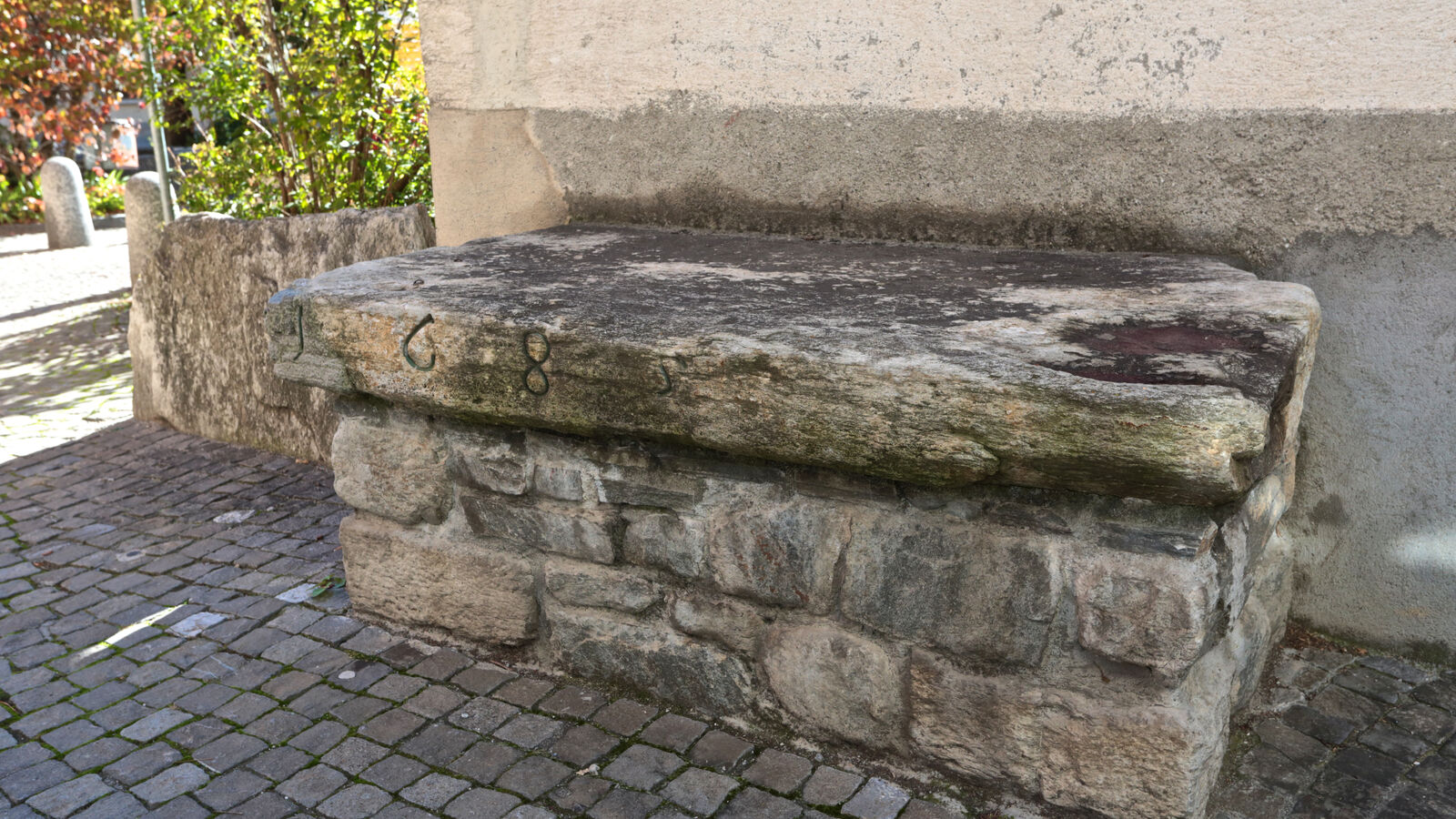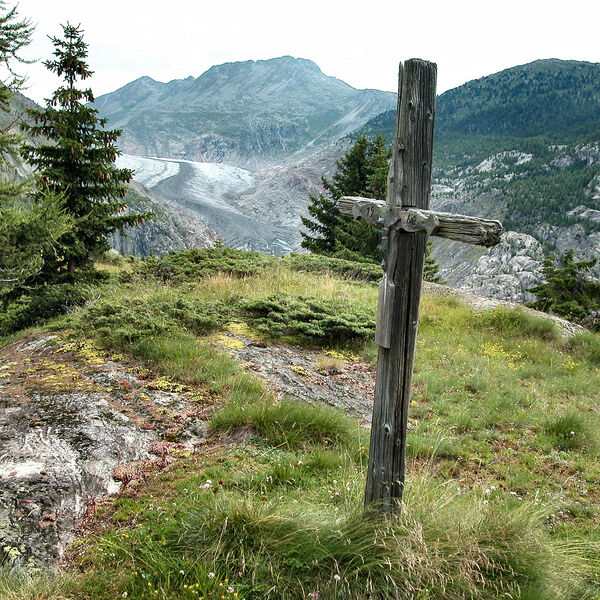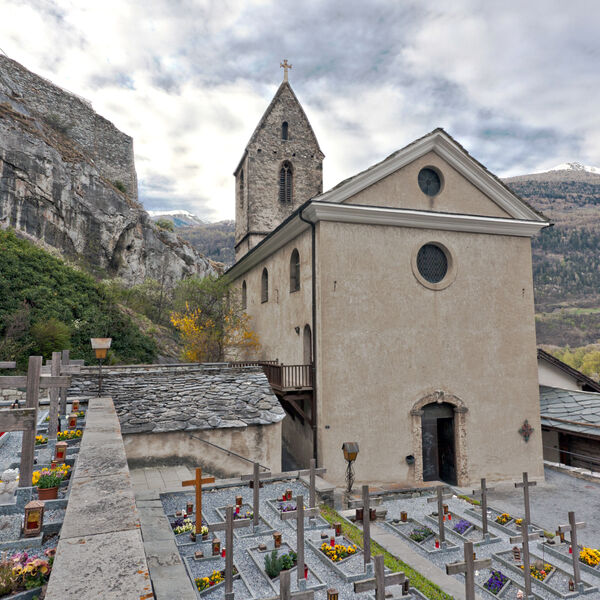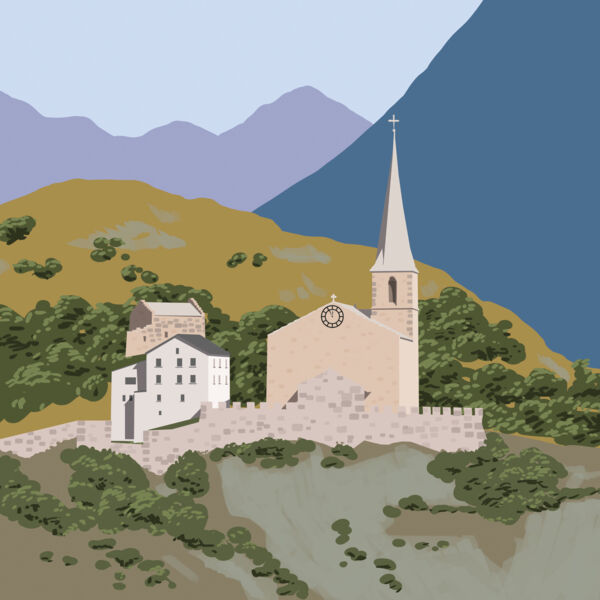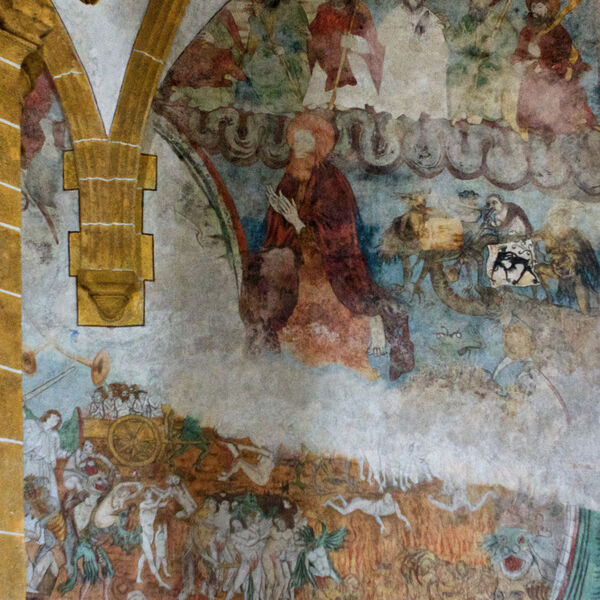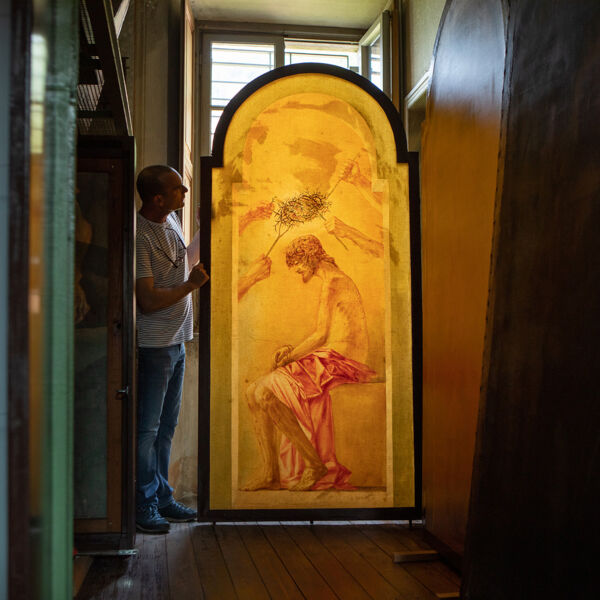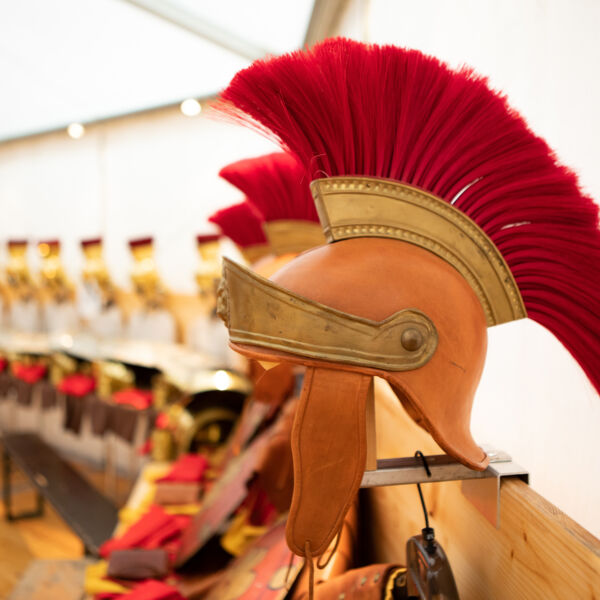Interessanter Ort
Schweizer Alpen Jungfrau-Aletsch
Schweizer Alpen Jungfrau-Aletsch
Totuplata
In Naters, wie auch in den meisten Orten im katholischen Wallis, war es religiöser Brauch, die Toten zuerst 2-3 Tage zu Hause aufzubahren, damit Angehörige Abschied nehmen konnten. Am Tage vor der Beerdigung wurden die Toten im Sarg auf den Totenplatten im Dorf aufgebahrt, um weiteren Menschen eine Verabschiedung zu ermöglichen.
Heute werden die Verstorbenen im Beinhaus aufgebahrt.
